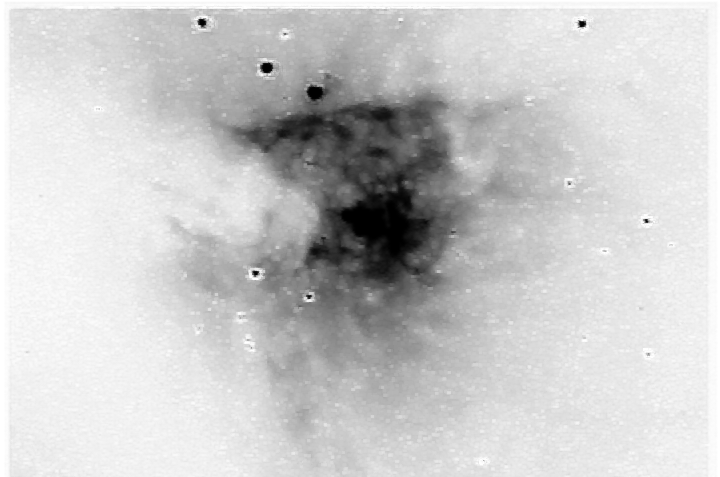 |
| Comet Lovejoy, 2-3 second exposure ETX-125 with.5 focal reducer and JR Pro |
We finally had a break in the frigid weather here in Indiana, with temperatures in the balmy lower 30s F. After seeing Comet Lovejoy in binoculars, I was determined to image it,
My house is surrounded by a forested area that extends all the way down to the nearby Wabash River and the best place to observe is the driveway. I have my 14 inch Meade ACF on wheelie bars in the garage, but the ice was so thick in the driveway, that after 10 minutes of grunting and pulling (and moving cars), I could not get the scope out (I should have bought the big wheels!).
Plan B was to use my little SmartEQ Pro mount that has so far been used exclusively to drive my PST. I took my ETX125 OTA with dovetail and and put it on the mount. I had to add a 2 pound weight from my barbell weight set to balance it, but it finally sat happy on the mount. More critically, I had to pick up my daughter from swim practice at 8 pm, and the fact I knew the clock was against me was a cause of anxiety. I really wanted to image this comet!
I
 |
| Another image of Comet Lovejoy |
It was 7:15 and I decided to set up on my patio, which is surrounded by trees with just a small amount of sky visible. But as there are no leaves right now, and as I calculated the comet would be in the clear sky, I set up there. I powered up the mount, did a quick polar align and pulled the coordinates for Lovejoy from the Astronomy Magazine site. I entered the coordinates--so much easier than on a Meade controller--and the scope slewed. I looked in the finder; nothing. I synched on Aldebaran and tried again. Nothing. In fact, the scope seemed to my eyes, to be well away from the area I had seen the comet a couple of days ago. I checked the coordinates on several sites. They were all significantly different. I then went to the Sky Live site. Their position seemed about right and I entered their coordinates. The scope slewed, and there it was, a fuzzy blob in the finder just above the top of some pine trees! I centered it in the scope, connected the Jr Pro and looked at the laptop. The comet was visible as a hazy, monochrome blob with a very bright nucleus--more like an image of M31 than a comet. I captured some quick record shots. I adjusted the exposure with the hand controller. The wireless unit responded, but the camera did not--it was stubbornly stuck in its default 2-3 second mode. I checked the settings and restarted the camera--time was running out! No difference. What did Rock tell me when this happened before?? I checked my email--and there it was! Pull out the batteries from the hand controller to reset it. But I was out of time!
 |
| Pic taken of monitor with my iphone. The greenish color of the comet is (slightly) visible |
I drove off to get my daughter, leaving the scope to track. I was very excited and could not wait to get back and resume imaging. 20 minutes later, I got back. The mount had done a meridian flip and the comet was not in the viewfinder field any more! More concerning was that the laptop connection to the power strip was not good and the laptop battery had died. I reconnected the laptop power and turned it on. A thermometer icon came up on the screen--it was too cold to start!
I grabbed my monitor and plugged in the camera. The image showed a few stars in an otherwise empty field. I reset the exposure and this time it worked, but the scope was no longer pointed at the comet. I resynched on Aldebaran and entered the coordinates again--and there it was again. I centered it and played with the exposure. Even on a 10-second exposure, I could not see the tail and the green coloring was extremely faint--almost monochrome. Increasing the exposure washed out the sky backgound. Then I realized that in my haste I had not attached my skyglow filter! I decided not to go in and get it, and took some images using my iphone, but between the autoexposure and the low quality of the screen, the pix were a bit of a disappointment.
By now, I was chilling down, so I packed up for the night. I was happy that I had managed to get some pix of the comet, but disappointed that they were not better. I guess that it the lesson of amateur astronomy--you have celebrate the small victories!













